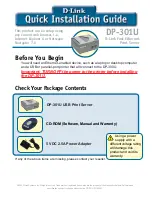
Dialogic
®
DSI SS7G41 Signaling Server – SIU Mode Release Notes
Release 1.3.6
29
Release 1.3.6
1
Overview
This is a feature release which increases the maximum available number of
TCAP dialogs for users interfacing directly to TCAP from 64k to 1million (2
20
),
it increases the licensed throughput capacity from 256 link equivalents to 512
link equivalents and adds new MAP protocol capabilities.
The release also allows DTS host routing to be configured using the config.txt
file on the SIU (removing the need for application functionality), provides a
new routing mode for use with IS-41 signaling which forces all messages with
the same BillingId to be routed (under normal routing conditions) to the same
host.
The release also adds support for dynamic configuration of SCCP Global
Titles, adds a new Message Router hunt algorithm and provides further
changes and corrections as detailed below.
This is the first GA release since 1.2.10 and it is fully backwards compatible
with that release. Users that make use of the new increased TCAP dialogue
capacity should avoid downgrading to 1.2.x software.
1.1
Applicability
This release is suitable for all users.
The following user documentation updates are available for use in conjunction
with this release:
Dialogic
®
DSI Signaling Servers – SS7G41 Operators Manual, Issue 6,
Dialogic
®
DSI Software Environment Programmer’s Manual, Issue 15,
Dialogic
®
DSI Protocol Stacks – SCCP Programmer’s Manual, Issue 10,
Dialogic
®
DSI Protocol Stacks – TCAP Programmer’s Manual, Issue 13,
Dialogic
®
DSI SIGTRAN Stack – M3UA Programmer’s Manual, Issue 9,
Dialogic
®
DSI Protocol Stacks – DTS User Guide, Issue 10.
1.2
Resolved Customer Issues
The following customer issues are resolved in this release: IPY00102639,
IPY00102686, IPY00102722, IPY00102727, IPY00102728 and IPY00102788.
2
New Functionality
2.1
Increased TCAP Dialogue Capacity
For users accessing the SIU at the TCAP level the SIU can now be configured
to support up to 1M (1,048,576 or 2
20
) dialogs. The maximum number of
invokes allowed by the TCAP module has also be increased to the same value.
To use this increased capacity (which requires more than 16 bits to uniquely
refer to a dialog) it is necessary to use a new extended addressing scheme
which makes use of the existing ‘id’ field in the message header and a new
Name-Length-Data parameter (TCPPN_DID) in the parameter area of the
message. This parameter must be the first parameter in the parameter area
of the message. The parameter must contain 4 octets of data representing
the full 32-bit Dialog Id.
















































